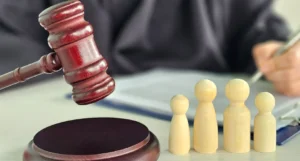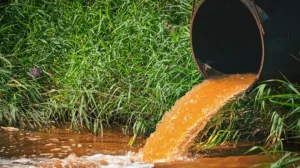Introduction
Even in divorce, a little tax planning can mean satisfying your child maintenance obligations tax-effectively.
Who benefits?
A Child Maintenance Trust offers tax benefits to both the parent making maintenance payments and the family receiving maintenance payments.
What is a Child Maintenance Trust?
A Child Maintenance Trust is a trust which arises out of family law proceedings or, in more general terms, as a result of family breakdown. It can also apply where there is a child whose parents were not living together and there is a financial maintenance order. As the name suggests, it is a trust which is set up to receive child maintenance payments.
Tax treatment
One of the principal benefits of a Coleman Greig Child Maintenance Trust is that it enables tax effective income splitting to beneficiaries of a trust (including beneficiaries who are under 18 years of age) without attracting penalty tax provisions contained in Division 6AA of the Income Tax Assessment Act 1936. Ordinarily, minor beneficiaries receiving distributions of trust income enjoy a tax-free threshold of only $416. Any amount in excess of this will be taxed at the penalty rates applying under Division 6AA of the Tax Act. These penalty tax rates include the top marginal tax rate of 45%.
Specifically excluded from these penalty provisions is income received by minor beneficiaries of a Child Maintenance Trust.
Under the tax rules applying to Child Maintenance Trusts, minor beneficiaries are given the benefits of ordinary adult tax treatment. That is, each minor beneficiary of a Child Maintenance Trust will enjoy a tax-free threshold of $18,200 and the usual marginal tax rates applying to income distributions from the Child Maintenance Trust in excess of $18,200. By recognising circumstances where a Child Maintenance Trust can be used, considerable after-tax dollars can be saved.
There are also benefits to the person making the child maintenance payments.
Ordinarily, child maintenance payments are made from after tax dollars. That is, from the pool of money on which tax has already been paid. A properly structured Coleman Greig Child Maintenance Trust can enable child maintenance payments to be effectively be paid in pre-tax dollars.
| Robert’s total income is $290,000 and he pays tax of $109,397 (including the 2% Medicare levy) with an after-tax income of $180,603. As a result of his $40,000 child maintenance obligations, Robert is left with $140,603 per annum.
Robert’s after tax and “after child maintenance” income position could be substantially improved by the effective utilisation of a Child Maintenance Trust. Robert could transfer property (for example, an interest in the investment vehicle, cash, income generating shares or income generating property) to the Child Maintenance Trust for the benefit of the children. The property transferred to the Child Maintenance Trust is invested to generate income and, as trustee of the Child Maintenance Trust, Robert can direct that, say, $40,000 per year be distributed to Jack and Jill (that is $20,000 to each). If income generated in the Child Maintenance Trust was say $45,0000 per year, the balance of the income ($5,000) could be distributed to Robert. What is Robert’s income position now? His income is $250,000 (salary of $245,000 and Child Maintenance Trust income of $5,000). His tax liability is $90,597, leaving an after tax and after child maintenance income of $159,403. What are Robert’s child maintenance obligations? Still the same $40,000. Only now it has been paid from the Child Maintenance Trust. Robert has been able to improve his after tax and after child maintenance position by $19,000 per year utilising a Coleman Greig Child Maintenance Trust. Robert will make a saving of at least $19,000 each year for the next 11 years (until the eldest child reaches 18 years), with further savings being made in years 12 and 13 (until the youngest child reaches 18 years of age).* * Figures quoted in this example are current as at the time of writing. Please check with Coleman Greig Lawyers for up-to-date information. |
Important factors
There are a number of important factors to consider in establishing a Child Maintenance Trust arrangement, including:
a) the terms of the Child Maintenance Trust must comply with the prevailing tax laws;
b) a key requirement with regards to the terms of the Child Maintenance Trust is that the child beneficiaries for whom the trust is established must ultimately acquire the capital in the trust when it ends. This requirement affects the type of asset chosen to be transferred to the Child Maintenance Trust since you would not want to transfer an asset that the transferor eventually wants to keep control of;
c) the Child Maintenance Trust arrangement must be consistent with existing child support obligations; and,
d) the transfer of property to the Child Maintenance Trust to generate income may give rise to capital gains tax and stamp duty implications depending on the nature, cost and value of the property transferred.
For further information or assistance with Child Maintenance Trusts, please contact Coleman Greig Lawyers Trusts team, who would be more than happy to assist you.














